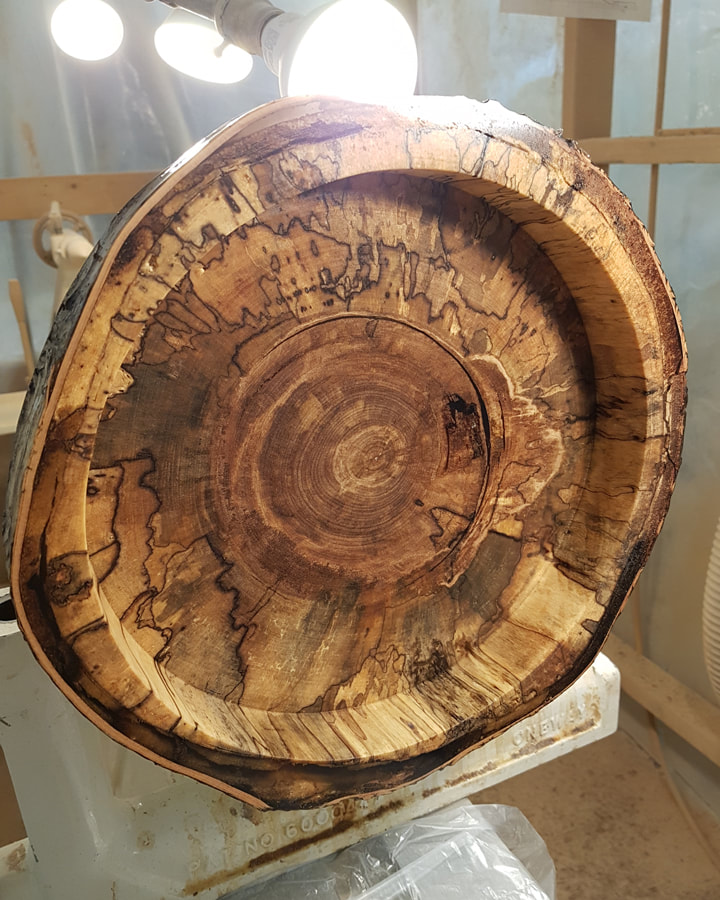| This piece had to be stabilized in a similar manner to the previous turning. However there were significant differences in how I went about this. I didn't use a mold this time. I had to pour epoxy into the areas where the bark had separated from the wood. This had to be done in several stages to avoid trapping bubbles inside the gaps. When this was completed both sides of the piece where coated excessively with a wash coat of epoxy. The bark area around the perimeter of the piece was also generously coated. The top of the bowl had to be trued and then turned in several sessions with wash coats of epoxy in between. I wanted to leave a generous rim as I didn't want the irregular shape of the bark and the outside of the piece to impact the interior of the bowl. Also, I wanted the lines from the rot and spalting on the rim to be easily followed to their conclusion towards the center of the turning. Unlike the rounded soft lines of the outside, I made the bowl with straight sides and a flat bottom. When looking directly into the piece from straight down the top becomes flat and one is left looking at a cross section of this remarkable piece of wood. | The bottom was straight forward. I well rounded the corner bringing it up the side to leave about an inch of bark. On this piece the bark was different and there was no compelling need to preserve itinerant bits of it. After turning, the bottom was given a wash coat of epoxy along with another coating of the bark. Once thoroughly dry the bottom was sanded to grit 1000 and given 5 coats of Salad Bowl Finish. This turning was called "The Passage of Time". It was 13" in diameter by 3" tall. The rest of the wood from this section of a birch tree was not worth saving and was put in the compost pile. In my next post I will describe how I dealt with the pine that was mentioned in the January 31st installment. Until then... |
Remember that you can click on any image in my recent posts to see an enlargement.




 RSS Feed
RSS Feed